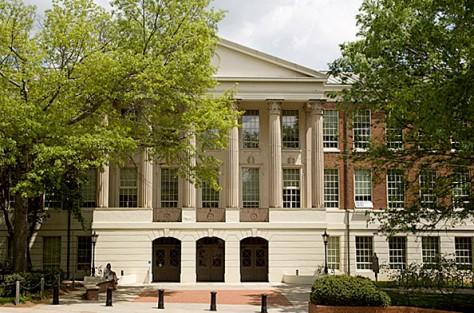Section Branding
Header Content
Unearthed Remains Create Controversy In Athens
Primary Content
In 2015, construction workers at the University of Georgia made a startling discovery. They dug up a human skull while working on an addition to a classroom building. Eventually, archeologists discovered more than 100 gravesites. Some of them could have been slaves. Some in Athens’ black community are upset with the way the university handled the remains.
Workers are putting the finishing touches on a new wing of Baldwin Hall. It should have been finished a year ago. But construction stopped, as UGA anthropologist Laurie Reitsema and her team searched for unmarked graves.
“Some of them remain unexcavated because they were underneath the foundation of the building. And from the remaining graves that were excavated, 63 of them had some kind of human remains that we could observe and study,” Reitsema said.
The building sits next to Old Athens Cemetery, which closed in the 1850s. It covers about two city blocks today, but it once extended to where Baldwin Hall now stands.
Reitsma says the remains were highly decomposed. Thirty graves had enough material for DNA tests. Most of those remains belonged to black people.
Given the time period, many of these individuals were likely slaves. Research shows UGA rented slaves in the decades leading up the Civil War. Announcements about the discovery make no mention of slavery. The university re-buried the remains at a cemetery that was once segregated. Those decisions upset Fred Smith, former president of the local NAACP.
“They have a slave legacy, and let’s deal with it from all points of view. You know, it’s a long time in some ways and it other ways it’s not so long,” Smith said.
UGA Chief Diversity Officer Michelle Cook says the university had to follow proper procedure for re-burying the remains. For that, the school followed guidelines offered by the State Archeologist's Office.
“And one of the recommendations was that the remains be reinterred at a cemetery close to the original burial site and with the capacity in terms of space to accommodate the configuration of the original burial spaces,” she said.
"We...reccomend reinternment in separate containers as a group and arranged as closely as possible to the original burial configuration so as not to inadvertently separate potential family members," State Archeologist Bryan Tucker said in a letter to UGA president Jere Morehead.
“Best practice would have been not to move the individuals at all,” said anthropologist Michael Trinkley. He’s director of the Chicora Foundation, which restores abandoned gravesites and cemeteries.
“Grave removals are traumatic events,” he said. “And the fact that these individuals are 50 years, 100 years, 200 years old to many does not reduce the trauma of the event of removal.”
About three miles away from the construction site, and hidden in a thicket of pine trees, is Brooklyn Cemetery. For decades, it was a cemetery used exclusively by black residents in Athens.
Linda Davis has led efforts to restore it. She says this would the ideal place for the remains found at Baldwin Hall.
“I want us to not make a conscious decision to ignore our past, because we don’t like it. I don’t like it, either,” she said. “But I cannot get past the strength and conviction and the courage that it gives me to know that I am the descendent of survivors. And it’s just that simple.”


